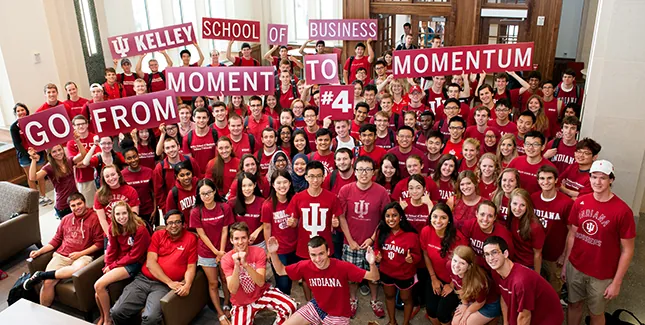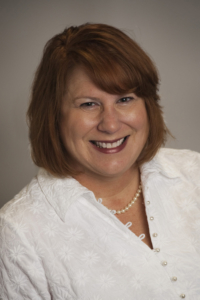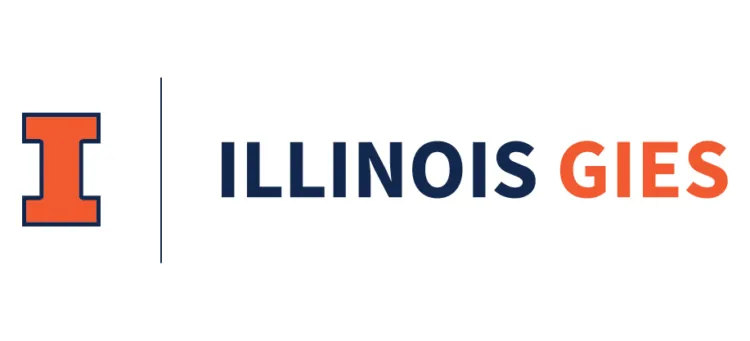
Indiana University’s Kelley School of Business students. Courtesy photo
HOW TO BATTLE THE GENDER GAP
To move the needle on a deeper basis, it will take a systemic shift of employers becoming aware of the unconscious biases existing for both men and women. But until we get to that point, Goerner says, it’s “incumbent” on women to figure out the quick strategies they can do to even the playing field. Universum researchers agree.
“There is no clear-cut explanation as to why male talent have continued to demand and negotiate higher salaries,” the report reads. “If female talent do not demand higher wages during negotiations, the gap will not be narrowed unless employers are proactive and voluntarily provide higher wages to women without being asked for them.”
Goerner, who teaches an MBA negotiations class at Indiana University, suggests women call attention to the fact that they are negotiating for a reason and that she brings awareness to the understanding it is a potentially uncomfortable conversation for both sides. “It reinforces that she cares about the relationship,” Goerner explains. “It helps to communicate this is potentially treading on delicate ground and it’s not going to be like this all the time.”

Carolyn Goerner of Indiana Kelley. Indiana University photo
MOVEMENT IS HAPPENING, ALBEIT SLOWLY
Of course, the responsibility to close the gap also falls on employers.
“From an employer branding perspective, taking the initiative to address this pay gap issue head-on could provide a unique advantage for your employer brand,” the Universum report says. “Employers who are willing to take this approach will more than likely not only attract more top female candidates but increase in attractiveness among their female demographic since they are taking initiative to address the gender pay gap issue.”
McElhaney agreed a 0% pay gap could — and should — become a competitive advantage for companies. “I’d like to see equal pay be a competitive advantage from a recruitment perspective,” says McElhaney, piggy-backing off the report’s conclusion. “Gap, Inc. has a 0% pay gap. I’d like to see people want to work at Gap, Inc. instead of H&M because they have a 0% pay gap.”
Just earlier this year, Iceland had a law come into effect that makes it illegal for companies with 25 or more employees to pay men more. Under the legislation, companies must prove they have equal pay or will be forced to pay $500 a day in fines until they do so. McElhaney says she’d like to see similar legislation within the U.S., or at least a requirement for companies to disclose salary data before being listed as a publicly-traded company. Earlier this week, Citibank became the first financial institution to disclose salary averages based on gender and race. The details were vague, but Citibank essentially found that women earn 1% less than men and that ethnic minorities earn 99 cents to every dollar a white person makes. Salesforce became the first large company to do such a study in 2015 and spent $3 million to retroactively cover significant pay differences. Last fall, Salesforce redid the process and spent another $3 million.
A CALL FOR MACRO- AND MICRO-LEVEL TRANSPARENCY

Kellie McElhaney. Berkeley-Haas photo
Both McElhaney and Goerner believe those types of disclosures is a step in the right direction. Universities like Indiana University already track that data in first jobs after graduation, Goerner says. If student-reported first jobs salaries are significantly different among men and women, they let the companies know they’re watching. Interestingly, Goerner notes that last year women graduating from Kelley made on average about $300 more than men.
“I can’t emphasize enough how important it is that students report to the universities their starting salaries,” Goerner says. “The placement offices can really help out.”
For now, at least, that kind of transparency — both on a macro and microlevel — might be the most promising areas to move the pay gap needle in a more equitable direction.
“I don’t believe companies will ever voluntarily pay women more,” McElhaney says. “But I do believe they can be more transparent and crunch their data to see what they are paying.”
DON’T MISS: THIS CLASS IS A GAME CHANGER FOR WOMEN or MEN STILL GETTING MORE OFFERS THAN WOMEN











Questions about this article? Email us or leave a comment below.